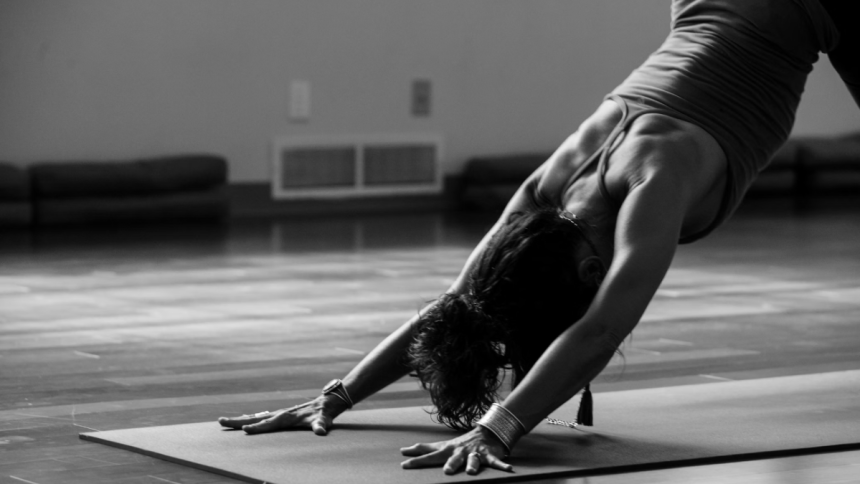Yoga’s blend of mindful stretches and breathing mirrors the discipline athletes apply in training. It is not just about flexibility, but a holistic tool to keep the body resilient and the mind steady, much like routine upkeep for a finely tuned machine. For pros, yoga can extend playing years while fostering sustainable health habits, which, in their turn, contribute to making athletes’ fandom communities on digital platforms such as stake apk. Its accessibility, requiring no special gear, makes it appealing for anyone curious about wellness. This article is ultimately designed to examine how yoga benefits athletes, encouraging both professional athletes and amateurs to explore its potential for enhancing performance and vitality.
Enhancing Mobility for Peak Performance
Athletes need fluid movement, and yoga’s poses, like cat-cow or pigeon, improve joint mobility and muscle elasticity. This supports actions like pivoting in basketball or sprinting in soccer, reducing wear on the body. Unlike heavy strength training, yoga’s gentle approach promotes consistent progress, ideal for long-term fitness. Research on mobility’s role in sports performance is ongoing, with some views emphasizing its benefits and others questioning its direct impact. Try simple stretches to feel the difference, but note that results vary by individual.
Reducing Injury Risk Through Stability
Injuries can derail careers, but yoga’s emphasis on balance and core strength may help prevent them. Poses like plank or bridge engage stabilizing muscles, much like a coach preparing a team for unexpected plays. This strengthens areas often overlooked in traditional workouts, potentially lowering strain risks. Studies on yoga’s injury prevention are mixed, with gaps in long-term evidence, so approach claims cautiously. Combining yoga with other conditioning can create a balanced routine, but consult trainers to personalize your approach.
Sharpening Mental Focus Under Pressure
Sports require mental clarity, and yoga’s breathing practices, like alternate nostril breathing, foster calm in high-stress moments. This acts like a reset switch, helping athletes refocus during critical plays. Enhanced focus can improve decision-making, akin to a strategic timeout. Research on yoga’s mental benefits is promising but lacks consensus on its specific effects in sports. Practicing brief mindfulness sessions can build mental resilience, though exploring other techniques may also suit your needs.
Boosting Recovery for Longevity
Intense training might end up being detrimental to bodily functions, especially in the long-term. This is what happens to numerous professionals in the field of sports. Yogic practices, namely asanas aimed at joint flexibility mostly, are an effective means to skyrocket recovery by boosting circulation, moving lymphatic fluids, and easing muscle tension. For instance, restorative poses, such as child’s pose, promote relaxation and flexibility, acting like a post-game cool-down to repair stress. This can help athletes maintain performance over time, supporting career longevity. The science of yoga’s recovery benefits is evolving, with no universal agreement on its scope. Test gentle flows after exercise to assess their impact, as personal responses differ.
Why Yoga Resonates
Yoga’s versatility makes it ideal for athletes, adaptable to intense training or lighter routines. Like a maintenance schedule that keeps an engine running smoothly, it supports both body and mind. Its low-cost, minimal-equipment nature mirrors the accessibility of pickup sports, appealing to all. Yoga’s focus on regular practice aligns with the consistency athletes value, offering a sustainable wellness path.
Moderation and Exploration
Yoga isn’t a fix-all—overstretching can cause strain, and its benefits aren’t guaranteed. Use it as part of a broader fitness plan, alongside nutrition and rest. Research on yoga’s sports applications is incomplete, so try online classes or local studios to form your own perspective. Stay open to other recovery methods, as wellness science advances.
Getting Started
Incorporating yoga may feel perplexing due to the numerous variations of it, yet starting small is key. A 15-minute yoga video with basic poses like downward dog might be the next efficient step while noting how the body feels post-session. Sports-focused yoga resources or community classes should help to learn more about the practice. The reward is a balanced approach to health, supporting performance and vitality for the long haul.
Lynn Martelli is an editor at Readability. She received her MFA in Creative Writing from Antioch University and has worked as an editor for over 10 years. Lynn has edited a wide variety of books, including fiction, non-fiction, memoirs, and more. In her free time, Lynn enjoys reading, writing, and spending time with her family and friends.















